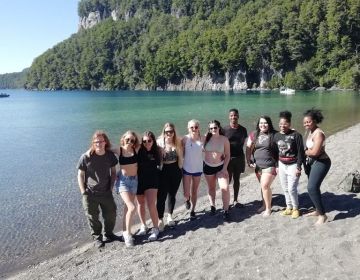How to Asado: A Beginner’s Guide to Argentina’s Favorite Ritual
If you're invited to an asado, clear your calendar — you're in for a full-on experience.
In Argentina, planning an asado isn't just about food. It's an event that people look forward to all week. It's a slow, flavorful ritual that brings friends and family together for hours — and it starts long before anyone sits down to eat.
It all kicks off with the asador, or grill master, choosing the perfect cuts of meat, picking up the achuras, prepping chimichurri, and chopping up the ensalada criolla. Most importantly, they light the fire — usually with a bit of newspaper, some wood, and then charcoal — to get the parrilla (grill) ready.
An asado is a big gathering where people come together to talk, spend quality time, and enjoy a leisurely evening. It usually lasts more than just a few hours. A well-known Argentine tradition is the sobremesa — long conversations that continue well after the meal is over. An asado might start around 1 p.m. and continue until merienda (afternoon snack), or sometimes even past dinnertime.
The art of making an asado isn’t an exact science — everyone has their own way of doing it. The host is in charge of the grill, and guests are expected not to interfere or offer unsolicited advice — that’s considered bad manners.
If you want to make an asado, here are a few things to know and keep in mind:
First, the cuts of meat:
- Tira de asado (short ribs)
- Vacio (flank steak, from between the ribs and hind legs)
- Bife de chorizo (sirloin steak, from the side)
- Entraña (skirt steak, from the inner side of the ribs), often considered the best and most tender cut — and therefore the most expensive
Starters are another important part of the experience. There are usually two types:
- A spread of cheeses, cured sausages, chips, olives, and other briny snacks.
- The achuras — fattier parts of the animal grilled on the parrilla. These include morcilla (blood sausage), chorizo (used in choripán), molleja (sweetbreads, typically from the neck), chinchulín (intestines), and riñón (kidney).
And don’t forget the provoleta — a round of provolone cheese seasoned with herbs and grilled until gooey and golden. It can be a starter or side dish.
While any salad can be served with an asado, ensalada criolla is essential. It’s made from finely diced red and green bell peppers, white onion, and gutted tomatoes, dressed with vegetable oil, white vinegar, and salt.
Chimichurri is another must — a flavorful sauce made with parsley, oregano, garlic, vinegar, vegetable oil, crushed red pepper flakes, and salt. It pairs well with everything, especially choripán and grilled meats.
Doneness — or punto — is one of the more subjective aspects of the asado. Some like their meat well-done (known as suela, meaning "shoe sole"), while others prefer it medium rare. The asador usually decides the doneness, though they may cook different pieces to different levels to please everyone.
A key tradition as a guest is the round of applause for the asador once everyone sits down to eat. Someone will call out, "¡Un aplauso para el asador!" in appreciation of the early morning grocery run, the hours spent next to the fire, and all the care put into preparing the meal — and everyone will clap.
Whether you're visiting Argentina or planning your own asado, remember: it’s not just about the food. It’s about connection, conversation, and taking the time to enjoy life — one delicious bite at a time.
Related Posts

There is no better way to get to know a culture than through its food
While I was a foodie long before I came to Buenos Aires, something about spending so much time alone in the city really sparked a new dimension to the way... keep reading

Bariloche - Buenos Aires Study Tour
Spring Block I - Bariloche Bariloche, in the province of Río Negro, Argentina, is situated in the foothills of the Andes mountains on the southern shores of Nahuel Huapi Lake... keep reading

Another Great Reason to Study Abroad in Buenos Aires
As if Buenos Aires’ didn’t have enough going for it – with its cultural largesse, tree-lined boulevards, fascinating history, world-famous beef, and passionate tango. Now this cosmopolitan city is playing... keep reading

